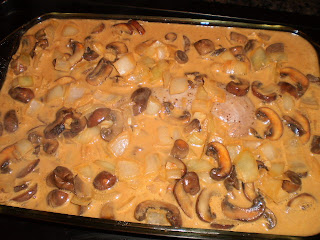I know what you are thinking. You are thinking: "This chick is addicted to broccoli and ginger".
Could be. I can't go very long without ginger: the fresh stuff in a curry or stir-fry, ginger candies, ginger tea... (for the record, I may also be addicted to scarves, Doc Martens, tattoos and a few records, but that's a whole other ball game). Broccoli is one of my favorite veggies: it's cute, tasty, packed with iron and vitamin C, and it is one of those cancer-fighting veggies. Honestly, broccoli deserves a super-hero suit.
Combine the two ingredients together and you have one immune-boosting combo that can beat the pants off any insipid supplement. Add beans to the mix and your proteins are taken care of. Is this the perfect, healthly, nourishing and tasty soup, or what?!
Spring is almost on our doorstep, but this being Canada, the weather is rather unpredictable and schizophrenic: 10 degrees Celsius one day, minus 7 the next, sunshine and snowfall simultaneously... That never stopped us Montreal girls from getting our short skirts good and ready, but a bit of warm, comforting food can't hurt when spring is having repeated false starts. This soup seems to me like the perfect compromise between a bright summery soup and a warming winter comfort. Ideal for this seasonal limbo we found ourselves in!
1 large head of broccoli (a bit more than 1 pound), stalks and florets chopped roughly
2 large onions, roughly chopped
5 cloves of garlic, roughly chopped
1 tablespoon of olive oil oil
4 tablespoons fresh ginger, chopped
2 limes, juiced
1 teaspoon cayenne pepper
4 cups vegetable broth
3 tablespoons tamari
1 large pinch of black pepper
1 small bunch fresh coriander, roughly chopped
2 large onions, roughly chopped
5 cloves of garlic, roughly chopped
1 tablespoon of olive oil oil
4 tablespoons fresh ginger, chopped
2 limes, juiced
1 teaspoon cayenne pepper
4 cups vegetable broth
3 tablespoons tamari
1 large pinch of black pepper
1 small bunch fresh coriander, roughly chopped
1 (28 ounces) can of cannellini (or other white beans), drained and rinsed
1 large handful of toasted pine nuts
1 large handful of toasted pine nuts
In a large saucepan, gently fry the onions, garlic, ginger and cayenne pepper in the olive oil for 5 minutes.
Add the broccoli stalks and the vegetable broth. Bring to a boil then cover and simmer over medium heat for 8 minutes. Add the broccoli heads, the beans and the coriander. Add enough water to just cover everything.
After 5 minutes, use a knife to pierce the broccoli: when it’s tender, turn the heat off and allow to cool slightly before you start blending. If you want to keep some whole broccoli florets for serving on top of your soup, remove them now. Add the fresh lime juice, the tamari, pepper and puree with an immersion blender. Taste and check for seasoning. Put back on low heat and make sure the soup is heated through. Serve immediately.
This soup's flavor is very surprising: exotic, hot and... well, green! It's miles away from the boring old cream of broccoli or broccoli and cheddar soups you may be used to. The green vegetable's flavor and the fresh coriander come out the stars of the show, along with the lovely heat of ginger and cayenne. You could garnish it with a scattering of pine nuts, a touch of plain yoghurt or sour cream, and a lovely piece of fresh nan bread to dip! It's a bit thin to be a meal-soup, but it is the perfect appetizer for a Middle Eastern or Indian themed meal. Actually, any meal with bold flavors could second a bowlful of this wonderful soup!
Add the broccoli stalks and the vegetable broth. Bring to a boil then cover and simmer over medium heat for 8 minutes. Add the broccoli heads, the beans and the coriander. Add enough water to just cover everything.
After 5 minutes, use a knife to pierce the broccoli: when it’s tender, turn the heat off and allow to cool slightly before you start blending. If you want to keep some whole broccoli florets for serving on top of your soup, remove them now. Add the fresh lime juice, the tamari, pepper and puree with an immersion blender. Taste and check for seasoning. Put back on low heat and make sure the soup is heated through. Serve immediately.
This soup's flavor is very surprising: exotic, hot and... well, green! It's miles away from the boring old cream of broccoli or broccoli and cheddar soups you may be used to. The green vegetable's flavor and the fresh coriander come out the stars of the show, along with the lovely heat of ginger and cayenne. You could garnish it with a scattering of pine nuts, a touch of plain yoghurt or sour cream, and a lovely piece of fresh nan bread to dip! It's a bit thin to be a meal-soup, but it is the perfect appetizer for a Middle Eastern or Indian themed meal. Actually, any meal with bold flavors could second a bowlful of this wonderful soup!



























